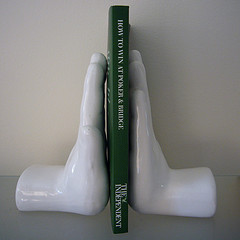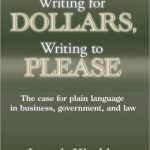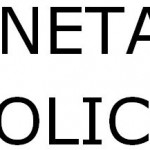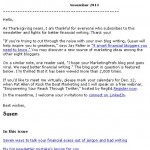Plain language: Let’s get parenthetical
Plain language makes your documents more appealing and easier to understand. But circumstances may require you to use jargon. For example, you may be a financial marketer or professional working for bosses or departments that insist on using technical or unfamiliar terms.
You can help reader comprehension by explaining the term in the sentence where it first appears. Parenthetical explanations are useful, whether you literally enclose the explanation in parentheses or set it off using some other technique.
Here’s a good example from The Wall Street Journal (June 28-29, 2014), p. A2:
“We are in a Goldilocks-like age at the moment,” said asset manager Jack Flaherty, referring to markets perceived as not too hot and not too cold—just right.
Goldilocks is a colorful image for readers who grew up with the story of Goldilocks and the three bears. However, it has a specific meaning in a financial context, so it demands explanation. Otherwise, the reader may wonder if “Goldilocks-like” refers to folks who wander into other people’s houses or try out different beds.
Option 1. Explain technical terms between commas
One classic approach to explaining technical terms is to use the term and then add an explanation that’s set off between commas. Here are examples:
- “And the duration of the index, a measure of how sensitive bond prices are to changes in yield, has risen to seven years from 5.8.”—WSJ (June 30, 2014), p. C6
- “Much of the focus on the ‘Volcker rule,’ which bans most speculative trading by banks, has been on how it forced them to rein in trading desks.”—WSJ (July 1, 2014), p. C12
- “Foremost is free cash flow, or what is left over to reward shareholders after investment needs have been met.”—WSJ (July 2, 2014), p. C1
By the way, I’m using examples from The Wall Street Journal to combat the idea that your sophisticated readers will be insulted if you explain technical terms to them. Plenty of very smart investment professionals read The Wall Street Journal daily. I’ve never seen one throw it aside in disgust with its style of writing.
Option 2. Put the plain language first
Another approach is to start with the plain language and then add the technical term or nickname, as in the examples below:
- “The Australian dollar, also known as the Aussie, has risen 6.5% against the year, making it the second-best-performing major currency after the New Zealand dollar.”—WSJ (July 2, 2014), p. C4 — This is an example of introducing the less familiar term parenthetically.
- “David Einhorn of the hedge fund Greenlight Capital recently observed that some companies he is betting against—or selling short, in Wall Street parlance — have become the targets of takeovers, even though, in his view, they have significant weaknesses.”—The New York Times (August 8, 2014)
Option 3. Avoid using the technical term
When possible, it’s great to avoid using the technical term. I bet nine out of 10 financial experts would have used the term “spread” in the following sentence: “Investors have flocked to the $1.6 trillion junk-bond market in recent years, attracted by the income the bonds paid above debt perceived as safer issued by investment-grade companies at a time of historically low interest rates.”—The Wall Street Journal (July 25, 2014)
By the way, if you need help talking your executives into using plain language, check out my MarketingProfs article on “Seven Ways to Talk Your Financial Execs Out of Jargon and Bad Writing” (registration required).
Avoid this option: Enclose the explanation in parentheses
Did you expect me to recommend the use of actual parentheses? I didn’t find any good examples of parentheses usage in The Wall Street Journal. Actual parentheses can be distracting, as explained in “Better writing without parentheses,” by my friend Harriett Magee.
Photo Credit: Caro’s Lines via Compfight cc






In my opinion, the words and concepts may be more plainly expressed, but the sentences are difficult to read. A few periods might help readability.
Russell,
I agree that longer sentences can be harder to absorb. One of the most common changes I make when editing my clients’ drafts is to turn one long sentence into two shorter sentences.
Thank you for taking the time to comment!
I agree with the idea of explaining the jargon right away and I think the ways Susan uses are great — I don’t mind actual parentheses, mind you, depending on the nature of the communication. It should come as no surprise that you didn’t find parens in any WSJ article — I’m guessing that is a function of the style of the WSJ’s style book more than anything. One thing I LIKE about actual parentheses is that it’s a visual cue to readers — and to writers. I advocate using them when it’s appropriate.
Ingrid,
I’m glad you liked my examples. I agree that sometimes parentheses are appropriate.
Thank you for taking the time to comment!